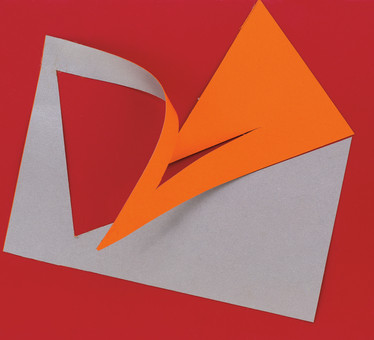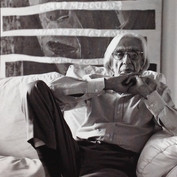Ferreira Gullar

Maranhão, Brazil, 1930 —
Rio de Janeiro, Brazil, 2016
The richness and breadth of Ferreira Gullar’s work emerges as an undisputed search for the inseparability between life and art. Putting subjectivity and corporeality at the forefront, such research takes place initially in the effort to promote the perceptive act as the foundation of the aesthetic experience and then, in a second moment, assumes courageous and reflected political engagement in the face of the national reality.
Ferreira Gullar was born in São Luís do Maranhão in 1930 and since his youth he has worked as a journalist and writer, activities that consecrated him as an important intellectual of the arts, especially from the 1950s when, already living in Rio de Janeiro, he became involved with the concretist movement. In 1954, the artist exhibited his poems in the first exhibition of Grupo Frente, at Galeria do Ibeu, and in 1956 he participated in the 1st National Exhibition of Concrete Art, held together with São Paulo artists from Grupo Ruptura, at the Museum of Modern Art of São Paulo (MAM-SP).
The divergences between Gullar and the theoretical conceptions of the São Paulo concretists, already latent in the exhibition at MAM-SP, led him to break with his colleagues in 1957, through the article Concrete Poetry: Phenomenological Experience. In 1959, dissent was formalized in the Neoconcrete Manifesto and Gullar was consolidated as its central theorist, a position attested by the famous text Theory of the Non-object (1959), which thinks of works of art as special objects, “free from any meaning other than that of its own appearance ”and that“ reaffirm art as the world’s first formulation ”.
The word conferred notoriety on Ferreira Gullar; his aesthetic work focuses notably on the synthesis between the semantic scope and the sensitive scope promoted by the visuality of the neoconcrete poetic production. Gullar’s three-dimensional paintings and works are endowed with a curiosity and aesthetic elaboration that expose important lines for understanding the more general purposes of neoconcretism. Examples of this are works that the artist produced in 1959, such as Não, Era e Lembra. Such works take as premises the geometry, the color and mainly the active participation of the public that, when manipulating them, obtains the conclusion of the composition: thus, it is in the gesture that the three-dimensional poem reveals itself as such. Also the Poema Buried (1959), carried out in the underground of José Oiticica Filho’s backyard, suggests this same revealing gestural force, engendering a poem that must be read while perceived, making the participant’s action its essence and its destiny.
The reliefs that Ferreira Gullar conceived on colored paper, some of which were later consolidated into metal, expose the gesture of clipping and twisting the shapes as a representation of time. In the coexistence with the work, the viewer perceives the duration, that continuous time that characterizes what is a living body: the work and the observer, both with their torsions and averse.
GGS
